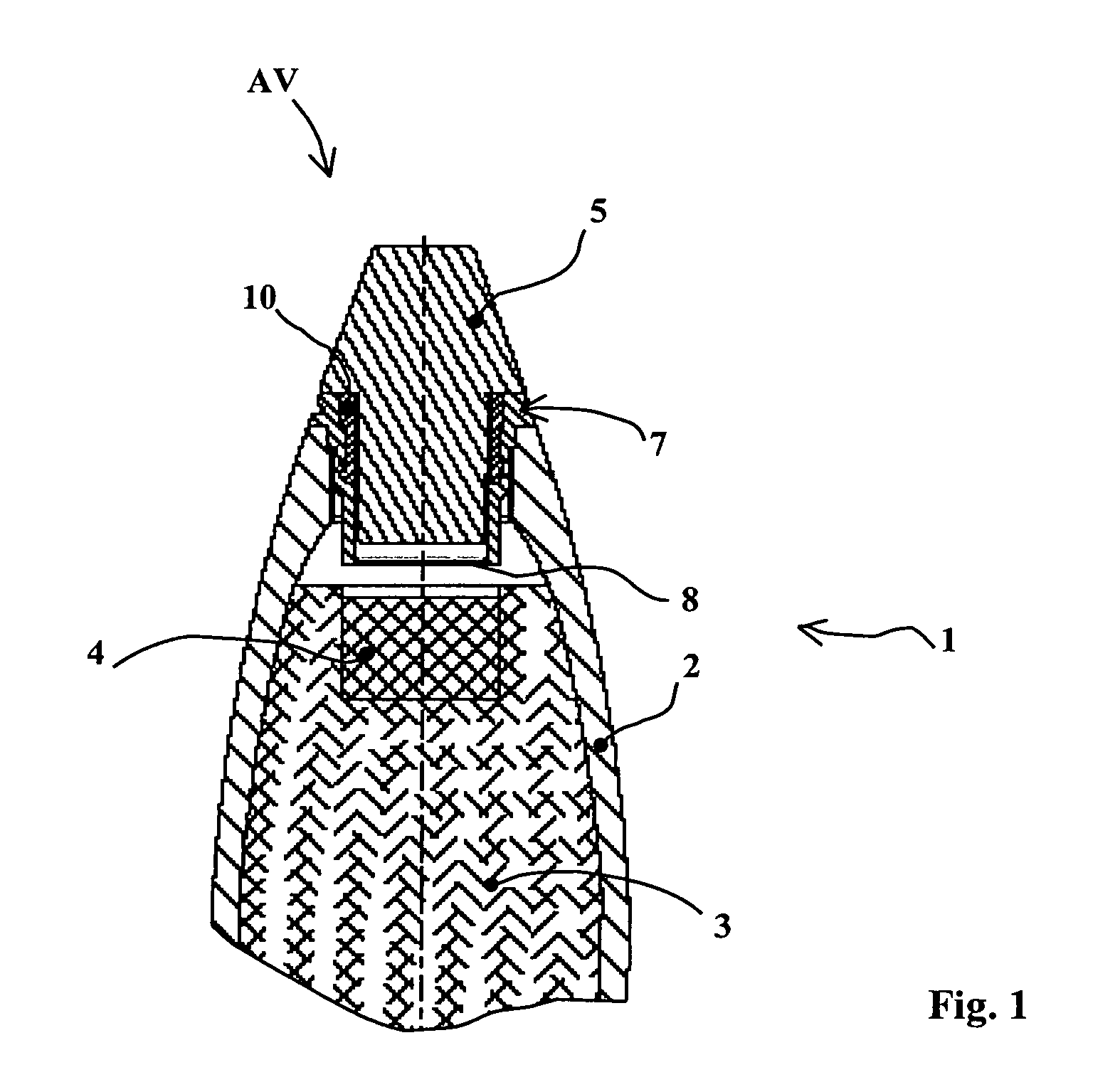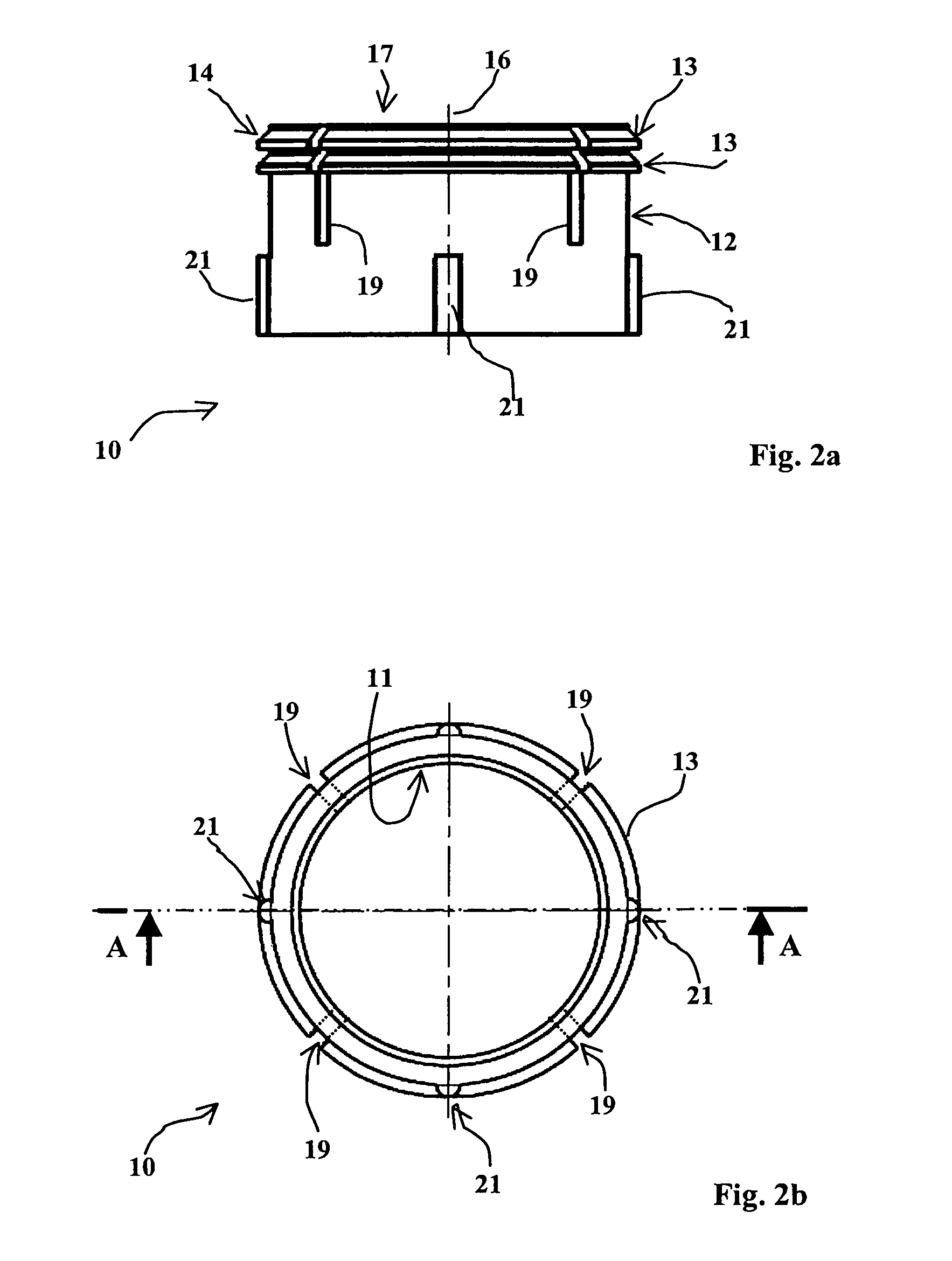Deconfinement device for the casing of a piece of an ammunition
a technology of deconfinement device and ammunition, which is applied in the direction of ammunition fuze, ammunition storage, weapons, etc., can solve the problems of projectile detonation, only being able to implement deconfinement means, and generating gases during breakdown. , to achieve the effect of reducing the thickness
- Summary
- Abstract
- Description
- Claims
- Application Information
AI Technical Summary
Benefits of technology
Problems solved by technology
Method used
Image
Examples
Embodiment Construction
FIG. 1 shows a partial longitudinal section of the front part of a piece of ammunition 1 that is an artillery projectile. This projectile is shown schematically here. It incorporates a casing or body 2 enclosing an explosive load 3. Its front part AV carries a fuse 5.
The explosive load 3 has on its surface a pellet 4 of a priming explosive composition.
A connecting ring 7 is linked to the body 2 of the projectile by threading. This connecting ring incorporates a base 8 forming a plate that may be projected onto the explosive load 3, 4 when the fuse is ignited 5.
The base 8 will advantageously incorporate at least one circular channel 9 (see FIG. 3b) which ensures a reduction in its thickness. This channel is obtained by machining one face of the base. It thus forms a zone of reduced thickness for the base 8.
The ring 7 is made of steel. The thickness of the connecting ring at the base 8 is of around 1 mm.
Igniting the fuse 5 causes the base 8 to be cut out at the channel 9.
This results ...
PUM
 Login to View More
Login to View More Abstract
Description
Claims
Application Information
 Login to View More
Login to View More - R&D
- Intellectual Property
- Life Sciences
- Materials
- Tech Scout
- Unparalleled Data Quality
- Higher Quality Content
- 60% Fewer Hallucinations
Browse by: Latest US Patents, China's latest patents, Technical Efficacy Thesaurus, Application Domain, Technology Topic, Popular Technical Reports.
© 2025 PatSnap. All rights reserved.Legal|Privacy policy|Modern Slavery Act Transparency Statement|Sitemap|About US| Contact US: help@patsnap.com



